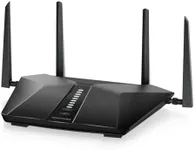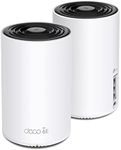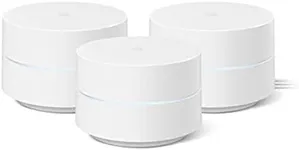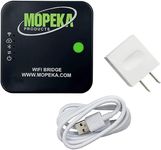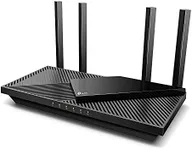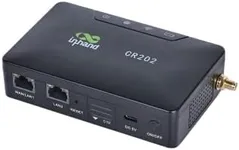Buying Guide for the Best Fibre Routers
Choosing the right fibre router is essential for ensuring a fast, reliable, and secure internet connection in your home or office. A fibre router connects to your fibre optic internet service and distributes the connection to your devices via Wi-Fi or Ethernet cables. To make an informed decision, you need to understand the key specifications and how they align with your needs. Here are the main specs to consider when selecting a fibre router.Wi-Fi StandardsWi-Fi standards determine the speed and range of your wireless network. The most common standards are 802.11n (Wi-Fi 4), 802.11ac (Wi-Fi 5), and 802.11ax (Wi-Fi 6). Wi-Fi 4 is older and slower, suitable for basic internet use. Wi-Fi 5 offers faster speeds and better performance for streaming and gaming. Wi-Fi 6 is the latest, providing the highest speeds, improved range, and better performance in crowded environments. Choose Wi-Fi 6 if you have many devices or need the best performance, Wi-Fi 5 for a balance of speed and cost, and Wi-Fi 4 for basic needs.
Dual-Band vs. Tri-BandRouters can operate on two frequency bands (dual-band) or three (tri-band). Dual-band routers use 2.4 GHz and 5 GHz bands, which helps reduce interference and improve performance. Tri-band routers add an additional 5 GHz band, which can further reduce congestion and improve speeds for multiple devices. If you have many devices or do a lot of high-bandwidth activities like streaming and gaming, a tri-band router may be beneficial. For general use with fewer devices, a dual-band router is usually sufficient.
Speed RatingsRouter speeds are often listed in megabits per second (Mbps) or gigabits per second (Gbps). These ratings indicate the maximum theoretical speeds the router can handle. Common ratings include AC1200, AC1900, and AX3000, where the number represents the combined speed of all bands. Higher numbers mean faster speeds, but real-world performance depends on your internet plan and network conditions. Match the router speed to your internet plan; there's no need to pay for a high-speed router if your internet plan is slower.
Coverage AreaThe coverage area of a router indicates how far its Wi-Fi signal can reach. This is usually measured in square feet. Larger homes or offices will need routers with greater coverage. Some routers come with mesh systems, which use multiple units to extend coverage throughout a larger area. Consider the size of your space and any potential obstacles like walls or floors that might interfere with the signal. Choose a router with sufficient coverage for your entire area, or consider a mesh system for larger spaces.
Number of Ethernet PortsEthernet ports allow you to connect devices directly to the router for a more stable and faster connection. This is important for devices that require a lot of bandwidth, like gaming consoles or desktop computers. Routers typically come with 2 to 8 Ethernet ports. Consider how many wired connections you need and choose a router with enough ports to accommodate your devices.
Security FeaturesSecurity features protect your network from unauthorized access and cyber threats. Look for routers with WPA3 encryption, which is the latest and most secure Wi-Fi encryption standard. Additional features like firewalls, guest networks, and parental controls can also enhance security. If you have sensitive data or want to control access to your network, prioritize routers with robust security features.
Quality of Service (QoS)Quality of Service (QoS) allows you to prioritize certain types of traffic on your network, ensuring that important activities like video calls or gaming get the bandwidth they need. This can be particularly useful in households with multiple users and devices. If you frequently engage in high-bandwidth activities, look for a router with QoS features to optimize your network performance.
MU-MIMO TechnologyMulti-User, Multiple Input, Multiple Output (MU-MIMO) technology allows a router to communicate with multiple devices simultaneously, rather than one at a time. This improves the overall efficiency and speed of your network, especially in environments with many connected devices. If you have a busy household or office with many devices, a router with MU-MIMO technology can help maintain fast and reliable connections for everyone.
